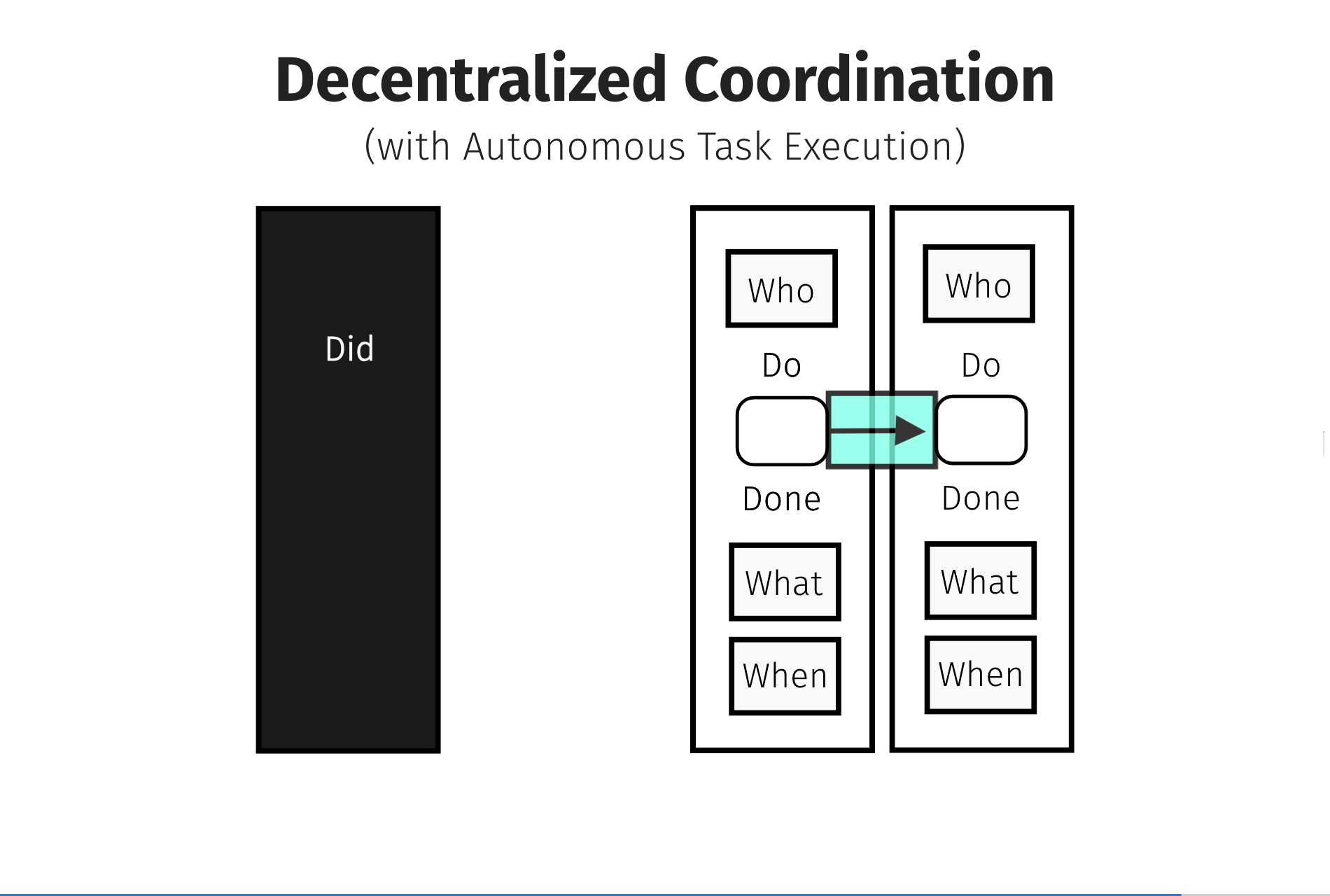Design Patterns for Process-centric
APIs
Cesare Pautasso
http://www.pautasso.org/
@pautasso@scholar.social
7.12.23, HPI, Potsdam, Germany
Contents
- APIs
- Process-Centric APIs
- Task Execution
- Task Coordination
Abstract
Just like every software component has an interface, every open software architecture has an Application programming interface (API) which delimits its boundary, keeping it separate from other systems, while making it possible to connect and interact with them. Process-centric APIs are designed so that processes can flow through them. They are the main entry points for delegating execution, exchanging data, and transferring control back and forth across composable software systems. In this talk we illustrate a small collection of API design patterns derived from assigning the responsibility for determining "who does what when" to different parties, gradually deconstructing what it means to execute a process in a decentralized way.


Olaf Zimmerman, Mirko Stocker, Daniel Lübke, Uwe Zdun, Cesare Pautasso
Patterns for API Design
Simplifying Integration with Loosely Coupled Message Exchanges
December 2022,
ISBN: 978-0-13767010-9
44 Patterns for API Design
Client/Server
Storage vs. Computation
Processing Resource
Information Holder
Process-centric APIs
Who does What When?
Who does What When?
- Who should perform a task?
- Who initiates task execution?
Who does What When?
- What has to be done?
- Which task(s) can be done?
Who does What When?
- When should a task be started?
- When should a task be completed?
Process/Task
Imperative Task Execution
Voluntary Task Execution
Self Paced Task Execution
Deadline-Driven Task Execution
Self Imposed Task Execution
Spontaneous Task Execution
Loosely Coupled Task Execution
Independent Task Execution
Optional Task Execution
Elective Task Execution
Lock-Stepped Task Execution
Autonomous Task Execution
Passive Task Execution
Active Task Execution
Punctual Task Execution
Prioritized Task Execution
Arbitrary Task Execution
Facultative Task Execution
Process/Task
APIs
Why?
- What is the purpose of a task?
- What causes a task to be executed?
Process/Task API
Multi Tasking
Coordination
What to do next?
Coordination
Centralized Coordination
Decentralized Coordination?
Decentralized Coordination
(with Autonomous Task Execution)
Coordination
Collaboration
Decentralized Collaboration
Conclusions
- Different Process-centric APIs patterns determine where decisions on task execution (who does what when, and why?) and task coordination (what to do next) are taken.
- Classical workflow architectures centralized all these decisions in the engine.
- It does not have to be that way.
Design Patterns for Process-centric APIs
Cesare Pautasso
References
- Tom Lichtenstein, Hassan Atwi, Mathias Weske, and Cesare Pautasso, Loose Collaborations on the Blockchain: Survey and Challenges, Proc. 21st International Conference on Business Process Management - Blockchain Forum, Utrecht, the Netherlands, Springer, pp. 21--35, September, 2023.
- Cesare Pautasso, and Erik Wilde, Push-Enabling RESTful Business Processes, 9th International Conference on Service-Oriented Computing (ICSOC 2011), vol. 7084, Paphos, Cyprus, Springer, pp. 32-46, December, 2011.
- Jesus Bellido, Rosa Alarcón, and Cesare Pautasso, Control-Flow Patterns for Decentralized RESTful Service Composition, ACM Transactions on the Web (TWEB), vol. 8, issue 1, pp. 5:1–5:30, December, 2013.
- Souhaila Serbout, Cesare Pautasso, Uwe Zdun, Olaf Zimmermann, From OpenAPI Fragments to API Pattern Primitives and Smells, Proc. of the European Conference on Pattern Languages of Programs (EuroPLoP 2021), Kloster Irsee, Germany, July 2021
- Cesare Pautasso, Ana Ivanchikj, Silvia Schreier, A Pattern Language for RESTful Conversations, Proc. of the 21st European Conference on Pattern Languages of Programs (EuroPLoP 2016), Kloster Irsee, Germany, July 2016, pp. 4:1-4:22
- Olaf Zimmermann, Mirko Stocker, Daniel Lübke, Uwe Zdun, Cesare Pautasso Patterns for API Design: Simplifying Integration with Loosely Coupled Message Exchanges, Addison-Wesley Signature Series (Vernon): Pearson Education, pp. 544, 2023.
- Cesare Pautasso, Business Process Management: visual lecture notes, Leanpub, 2021
 powered by
powered by







